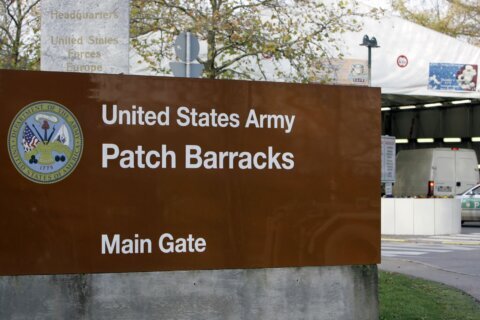WASHINGTON — Within minutes of the July 14 attack on the streets of Nice, France, that left at least 84 dead including 10 children, a single question dominated headlines on most every media outlet: Who claimed responsibility?
The same process occurred in Germany during a July 18 knife attack in Würzburg and again during a shooting rampage Friday in Munich.
That question, experts tell WTOP, is breathing new life into a brutal terror regime on its last legs. The Islamic State of Iraq and the Levant, known as ISIL or ISIS, has been responsible for numerous attacks in the last two years.
But while piecing together the origin of terror attacks is critical to intelligence and security teams trying to stop others who may be linked, counterterrorism experts warn that constant media droning about ISIL is sustaining the terror group.
An hour after the Bastille Day attack, terrorist sympathizers took to social media to revel in the carnage, appearing on Twitter and other social media platforms to cheer on the attacks. Their celebrations became a part of the news coverage.
Robert Baer, one of several terrorism analysts who work for media outlets, told WTOP that the clamor to quickly blame a terror organization fits into what he calls the irreversible need for “instant answers from the media.”
It’s a trend he sees no end to.
“No, there’s no opportunity to stop this. People want quick answers. They want simple answers and they look at the Islamic State as some sort of geographical entity that really exists, when in fact, it doesn’t,” said Baer.
But in the early moments and hours after terror attacks, ISIL is often erroneously blamed by speculation of terror groups for violent acts the organization is not responsible for. That may be fueling new, unrelated attacks.
“I’m starting to feel that people who are not terrorists are claiming to be terrorists just to look for the validation to conduct a major attack even if they don’t have an ISIS connection,” said Philip Mudd, former CIA and FBI executive responsible for tracking terrorists.
Mudd believes the trend is dispersing beyond those who intend to conduct acts of terror. “I think we’re starting to find that among other people, including those who are emotionally disturbed, when they have a grievance,” he said.
He described them as, “People who claim that they’re ISIS; and they go out and kill 10 people, 20 people, 50 people or in this case [2016 Bastille Day attack], 80 or more people, alleging that they’re ISIS members, but in fact they’ve just got some of the grievance with a family member or employer.”
The scale of the carnage in recent attacks often conjures images of terrorism rooted in the past. “I do believe we’re accelerating especially just within the past year to the question of who is responsible for these attacks thinking that we live in the old [terrorism] world where you might have sponsorship by an organization like al-Qaida that is clearly linked to an organization.”
In this new era of terrorism, ISIL appears to have become an umbrella for grievances for a growing number of people. But does it matter?
Mike Maness, director of Trapwire and a former CIA covert operative, believes pinpointing exactly which terror organization claims credit for the latest attack is of little use.
“In the end, whether the attack was carried out by Daesh, al-Qaida or al-Shabaab has little bearing on our immediate, tactical counterterror efforts since many of these groups are often sharing the same attack techniques regardless of their ideological affiliation or end goals.”
Pontificating about who did it and why is dangerous in his opinion.
“While understanding the religious, social, psychological and economic motivators that may influence a jihadist is important from a long-term strategic perspective, this will do little to stop the next attack, which is already being planned somewhere right now.”
To him, these are the five key questions rooted in “how” attacks happen that are more important:
- How are these groups selecting their targets?
- How are they able to collect intelligence right under the noses of law enforcement and intelligence services?
- How do they know exactly where to strike to cause the highest body count and most damage?
- How are they acquiring and transporting weapons and explosives to the scene?
- How are they communicating with each other prior to and during the attack?
As the stream of terror threats and attacks increases, so does the speed of the technology that drives the blame-and-claim cycles on both social and news media, creating a dizzying barrage of finger-pointing.
But, according to Mudd, a basic approach may be the best solution.
“To conduct an attack that’s terrorism, you’ve gotta have a political intent that involves the murder of innocents for a political purpose,” Mudd said. “When you’re dealing with people who are emotionally disturbed, I think there’s a simple question that we have to ask ourselves: Is this person emotionally and mentally capable of making a choice to commit an act of terror?”
A similar process takes place in most court systems and may have merit in potential terror situations.
“We do this all the time in murder cases. We say is the person capable of thinking about an act of murder? If not, they go into a separate category that’s called deranged. We should do the same thing [in] interrogations and we’re skipping that step when we try to determine whether an attack is terrorism,” Mudd said.








